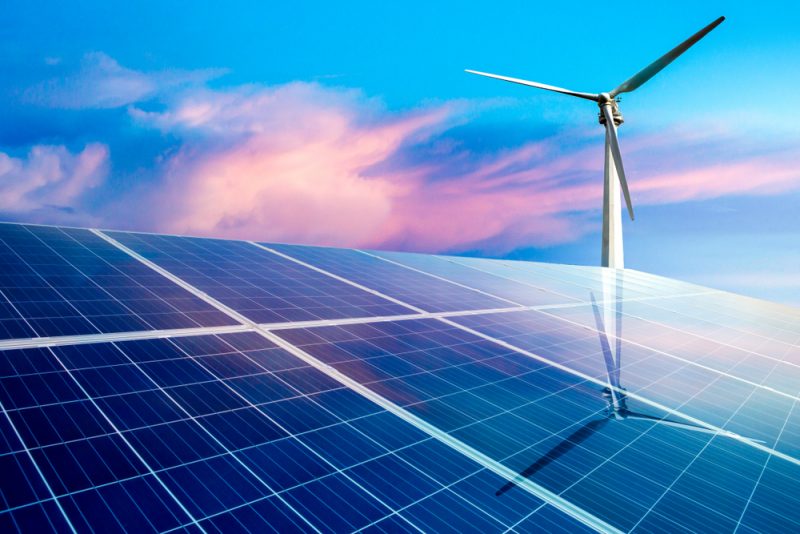New York governor unveils plan to double solar goal and expand offshore wind

New York Gov. Andrew Cuomo announced an initiative this week to double New York’s solar development to 6,000 megawatts (MW) by 2025 and quadruple the state’s offshore wind target to 9,000 MW by 2035.
As part of his annual State of the State address, Cuomo unveiled a number of new clean energy goals for the state in a “Green New Deal” agenda. The plan includes a mandate for the state to run off 100 percent carbon-free electricity by 2040, what the governor called the most aggressive goal in the United States and five years ahead of a target recently adopted by California.
“The cornerstone of this new goal is an increase of New York’s successful Clean Energy Standard mandate from 50 percent to 70 percent renewable electricity by 2030,” Cuomo said while announcing his Social, Economic, and Racial Justice Agenda for 2019.
The state hopes to achieve the goal through a number of initiatives, including doubling distributed solar deployment to 6,000 MW by 2025, up from a goal of 3,000 MW currently set for 2023.
“These groundbreaking investments in solar energy will create thousands of jobs, generate billions of dollars in investment, and bring clean and affordable energy to the residents of New York state,” said Abigail Ross Hopper, president and CEO of the Solar Energy Industries Association (SEIA).
Other goals include quadrupling the state’s offshore wind target from 2,400 MW by 2030 to 9,000 MW by 2035; more than doubling new large-scale, land-based wind and solar resources through the Clean Energy Standard; and deploying 3,000 MW of energy storage by 2030.
The plan also calls for maximizing contributions to the state’s existing renewable resources to increase their potential.
“Achieving 100 percent carbon-free electricity will require investments in resources capable of meeting diverse demands throughout the state, as well as a substantial increase in cost-effective energy efficiency,” the briefing book that accompanied the governor’s announcement said. “Harnessing a complementary set of carbon-free energy resources will assure reliability and affordability for all New Yorkers as the electricity system is both modernized and optimized.”
The governor also announced $1.5 billion in competitive awards to create 20 large-scale solar, wind, and energy storage projects in New York state.
“These projects will drive a total of $4 billion in direct investment in New York’s growing clean energy economy,” the briefing materials said, “as well as add over 1,650 megawatts of capacity and generate over 3,800,000 megawatt-hours of renewable energy annually — enough to power nearly 550,000 homes and create over 2,600 short-term and long-term jobs.”
The projects now mean that New York has awarded more than $2.9 billion to clean energy projects in the state. The state expects many of the projects to be underway by August 2019, with completion expected by 2022.
“His plan to double the NY Sun goal and extend the incentive program will provide much needed certainty for the distributed solar market,” Hopper added. “Furthermore, the announcement of 16 new large-scale solar awards builds on the 22 solar projects selected last spring.”
The proposal also aims to position New York as a leader in the growing U.S. offshore wind industry. New York will invest up to $200 million in port infrastructure to match private sector investment in regional development of offshore wind. The state also plans to support a clean energy technology workforce through creating an offshore wind advisory council and by investing in an offshore wind training center.
The governor’s plan “will deliver the energy system that New York needs – cost-effective, reliable, and 100 percent clean,” said John B. Rhodes, who serves as chair of the New York Public Service Commission.
Cuomo has also directed the New York State Energy Research and Development Authority (NYSERDA) Department of Public Service (DPS) to expand the Solar For All program, which helps underserved communities to access affordable and clean energy.
To help achieve the governor’s goals, the Green New Deal involves creating a Climate Action Council comprised of directors of different state agencies and experts. The council will make recommendations on regulations and clean energy programs, as well as forming a plan to reduce emissions from all major sources, including electricity, transportation, buildings, industry, commercial activity and agriculture.
